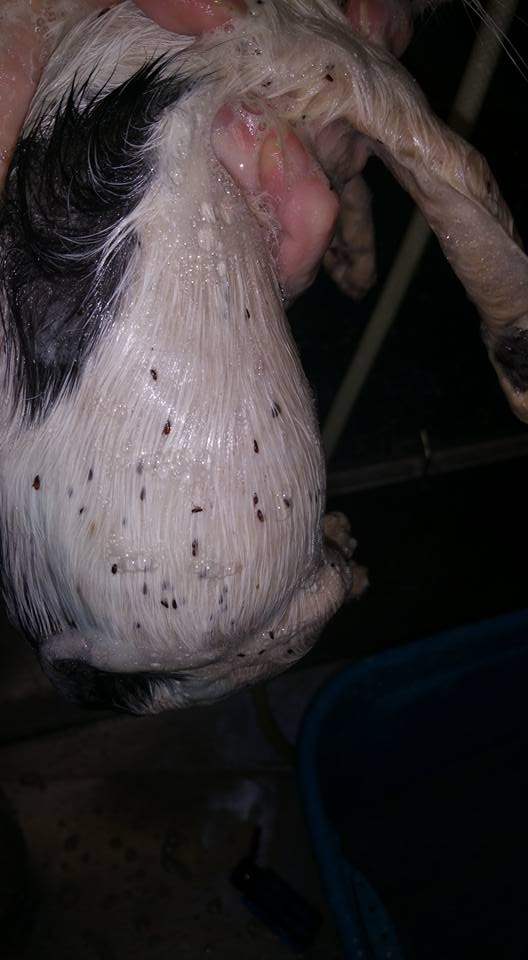As someone who often deals with ringworm, fleas are one of my biggest enemies. I have gotten very good at dealing with them quickly and effectively. My adult cats and adult fosters are treated monthly with Revolution. But for kittens under 8 weeks of age, this isn’t an option. Instead, I treat with a combination of Dawn flea bath and Capstar. However, Frontline has also been recommended and is used by some places.
Please do NOT use flea shampoos, dips or other over-the-counter treatments other than what has been listed here or been recommended by your veterinarian. Many flea treatments sold can be toxic to kittens. And never, never, ever use flea medication labeled for dogs on your cat.
Capstar (nitenpyram)
Capstar is a flea treatment sold over-the-counter. The label says it is okay for cats 2-25 lbs, which would indicate that it is for kittens over 8 weeks of age. Although the label says it is safe for kittens 4 weeks and up. However, shelters have been using it on younger kittens for years.
Austin Pet’s Alive kitten intake procedure is to give 0.10 cc per 100 grams of Capstar (10mg/ml). To create this solution, they recommend taking 1/2 pill (which is 57mg nitenpyram). Crush 1/2 of the pill with a mortar and pestle. Combine the 1/2 pill with 2.8 solution in a sterile medicine bottle. The solution should be a 50/50 mixture of Karo syrup and water. Stir well and store in refrigerator for up to 14 days.
Maddie’s Fund has a similar policy which states “If they are infested, we will dissolve a fraction of a Capstar and give each kitten a drop orally. You can do the math by fractioning so if one pill treats 10 lbs. of cat and the kitten only weighs 1 lb., then you only give 1/10 of the pill. Dissolving it makes it easier to get into them since they are so tiny and swallowing a pill is hard for them.”
Dawn Bath
One of the fastest and most effective ways to remove fleas is with a Dawn bath. Dawn has long been the gold standard for dealing with fleas on kittens. It can be used on kittens of all ages. The only concerns with using it on young kittens is that they don’t get water in their lungs and they stay warm.
To be effective, the dawn needs to stay on for at least 5 minutes. However, if you don’t have a room warm enough for this process, a bath can still be effective if you have a pair of tweezers and/or a flea comb.
Make sure you start the bath at the head and tail (to prevent the fleas from going towards the eyes/ears or anus. Then soap up the kitten. As the kitten sits with the soap, use the flea comb or tweezers to remove any fleas you can. Fleas should be drowned (put in a cup of soapy water) or crushed. Otherwise, they will jump to a new host.
Once the bath is over, make sure you dry the kitten completely using a blow dryer until the kitten is completely dry.
It is possible that other dish soaps also work on fleas. However, Dawn is always the one mentioned.

Frontline (Fipronil) Spray
Fipronil, or Frontline spray, can be used on kittens that are 2 days old and older, according to UC Davis Koret Shelter Medicine.
Frontline Topical
According to Maddie’s Fund, you can use a “tiny fraction of a drop of Frontline” on kittens over 2 weeks of age. For kittens under 2 weeks, they only use Capstar.
